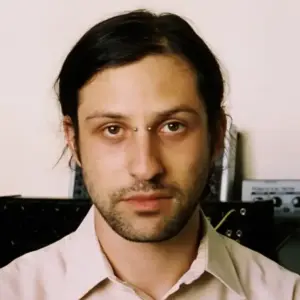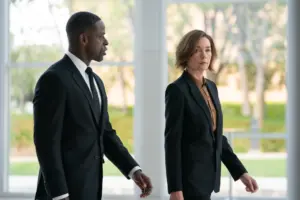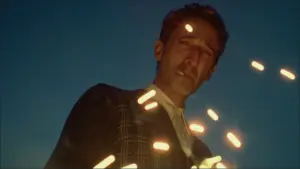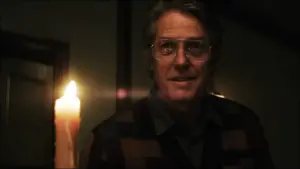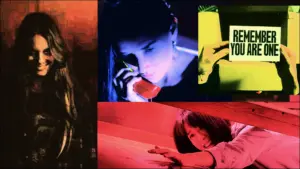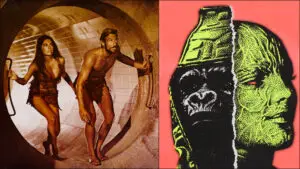Science fiction casts a broad umbrella. From Alien to Star Wars to Eternal Sunshine of the Spotless Mind, the term can mean virtually anything, so long as it denotes a speculative, non-magical framework for storytelling. As renowned author and editor Damon Knight once observed, “Science fiction is what we point to when we say it.”
The films listed here all qualify. This is not a list of bests, firsts, mosts or worsts – it is simply a handful of gems which never got their due. They are not all perfect, but they are all deserving of a watch.
Stalker (directed by Andrei Tarkovsky, 1979)
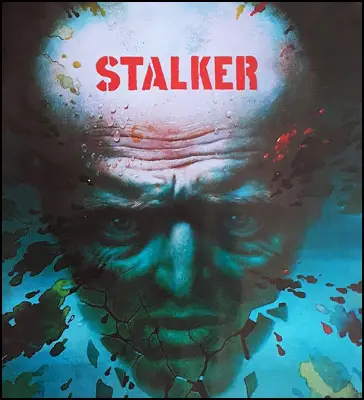
Based on the Strugatsky brothers’ 1972 novel Roadside Picnic, this Soviet-era masterpiece tells the story of three men’s journey into “the Zone,” an unspecified region of Russia under military blockade since its contact with a meteor, or some other extraterrestrial force. Within the Zone’s sprawling meadows and industrial decay the laws of nature have broken down, and “the Room” at its center is said to grant one’s deepest desires.
As with all of Tarkovsky’s work, it is formally daunting; but I find this one especially has an odd verve and sense of adventure, as these three lost souls scrap it out in the mud and the ruins. Though Stalker is undoubtedly renowned, it was poorly received upon its initial release and is often overshadowed by Tarkovsky’s immaculate Solaris (1972).
Another reason to highlight it here is its largely unremarked-upon influence on Jeff VanderMeer’s hit 2014 novel Annihilation, and Alex Garland’s 2018 film of the same name. While Stalker‘s anonymous “Writer” and “Professor” explore “the Zone,” Annihilation‘s “Biologist” and “Anthropologist” explore “Area X,” a vast stretch of southern wilderness transformed by an alien meteor. Also reminiscent of Stalker’s “Room” is Michael Crichton’s 1987 novel Sphere, and its own adaptation to film by Barry Levinson in 1998 (though at least that one’s underwater). If you’ve seen none of the above, I’d say stick with the original. Don’t go to sleep just because the Janus Films logo popped up.
Sunshine (directed by Danny Boyle, 2007)
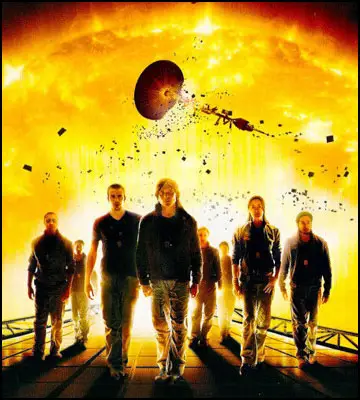
Speaking of Alex Garland, I would argue the best thing to bear his name is his 2007 collaboration with Danny Boyle, for which he wrote the screenplay. Following the success of their 2002 hit 28 Days Later (also starring Cillian Murphy, and also great), the two took another stab at genre with Sunshine. This near future epic follows a group of scientists aboard the spaceship Icarus II in their last ditch attempt to stave off a solar winter by dropping a giant nuclear bomb into our dying sun. Madness, paranoia and existential despair ensue. Though “prestige” doesn’t mean anything anymore, think of prestige Event Horizon.
Following a total dearth of advertising, Sunshine was largely overlooked upon release. Its third act also proved controversial, though (without spoiling anything) I’d argue its events are heavily telegraphed throughout the first two, and in my estimation make a great capstone. The supporting cast is insane (Rose Byrne, Michelle Yeoh, pre-Cap Chris Evans, Hiroyuki Sanada, Cliff Curtis, Benedict Wong, Mark Strong), as is the score (you may even recognize the main theme from its reuse in various trailers over the years) by John Murphy and Underworld. It looks like it cost three times what it did. It’s beautiful. It’s thoughtful. It’s great. I make everyone watch this movie. Watch this movie.
Galaxy Quest (directed by Dean Parisot, 1999)
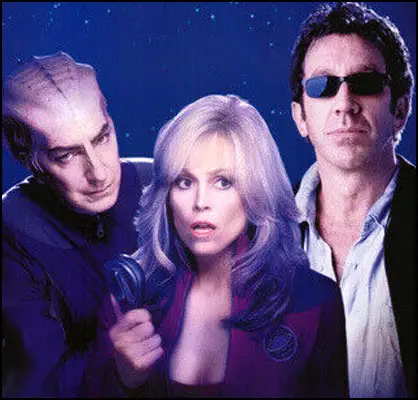
Just so they’re not all thinkers. This overt sendup of original series Star Trek follows the over-the-hill cast of the titular Galaxy Quest as they are abducted by aliens for a real-life space adventure. These aliens don’t seem to understand the concept of acting, and have been watching delayed transmissions of episodes for years thinking they viewed the escapades of real heroes. So, in an effort to save the galaxy from evil green guys, they build a replica of Galaxy Quest‘s ship and conscript its actors for the crew.
Though Galaxy Quest has undergone some due reevaluation, it suffered from confused marketing upon release and flopped at the box office. Featuring a stellar cast of its own with real-life sitcom star Tim Allen, real-life dramaturge Alan Rickman, real-life sci-fi queen Sigourney Weaver, as well as Sam Rockwell, Tony Shalhoub, Justin Long, and a host of other memorable character turns, it is genuinely funny, imaginative, and strangely touching.
High Life (directed by Claire Denis, 2018)
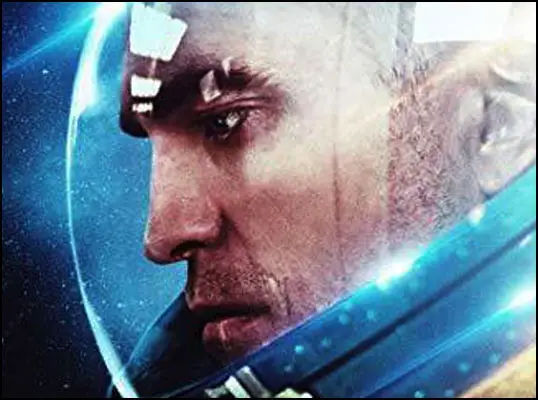
Mostly known for quiet character dramas and examinations of France’s post-colonial trauma, Claire Denis took a left turn for her 2018 deep space odyssey and English-language debut. After an extended introduction featuring Robert Pattinson alone with a baby on a spaceship with a garden, High Life slowly unravels into a jarring, abstract drama that follows a group of convicts on a mission to explore a distant black hole. If Interstellar was a stunning technical achievement with the humanity of an airport paperback, this is its inversion.
A passion project of Denis’s, she had worked on the screenplay in various forms for 15 years. It shows. The film achieves some remarkable things with its 8 million euro ($8.7 million) budget, and features a memorable supporting cast including Andre 3000, Mia Goth, and Juliette Binoche. Its limited release received a mixed reception, which makes some amount of sense; it is a strange and uncomfortable film. If you dabble in the strange and uncomfortable, it is more than worth its modest runtime.
The Wild Blue Yonder (directed by Werner Herzog, 2005)
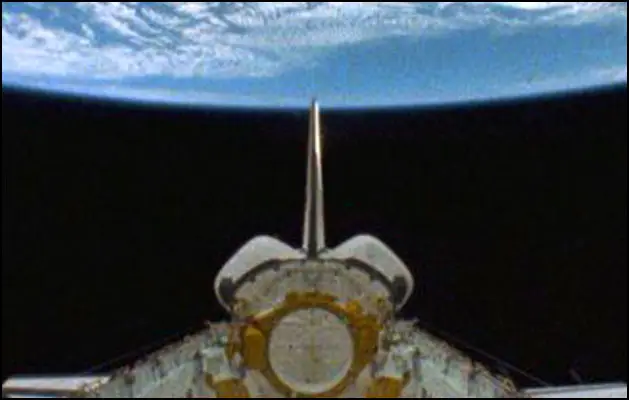
Saved the best for last. Though originally known for his guerrilla filmmaking with Klaus Kinski through the 1970s and ’80s, Herzog saw renewed popular interest in his work after the success of his 2005 documentary Grizzly Man. Somehow made that same year, this oddball footage collage/one man play/docudrama stars national hero Brad Dourif, and no one else.
The original footage features an un-made-up Dourif in a windbreaker out in Southern California’s Inland Empire somewhere, speaking to camera about his species’ failure to colonize Earth after their trip here from the Andromeda galaxy. He proceeds to tell the story of a group of humans who decided to make the return journey. With ample asides on prehistory and the vast gulfs of space, all of this is intercut with actual interviews conducted by Herzog on the scientific realities of interstellar travel.
To represent the Earth astronauts’ mission to Andromeda, handheld footage from a 1980s NASA mission is used, found by Herzog at the NASA video library in Pasadena. To represent Dourif’s planet with its frozen sky and atmosphere of liquid helium, Herzog used a friend’s haunting footage of scuba diving beneath the ice layer in Antarctica. This footage later inspired Herzog to go see the place for himself, which he did in 2007’s Encounters at the End of the World. Accompanied by original pieces from a Dutch cellist and a Senegalese men’s choir, it is very safe to say The Wild Blue Yonder is a singular entity. Basically no one has seen this movie. It is free on YouTube. It will change your life.
Lee Landey is a writer and musician living in Los Angeles. His science-fiction book, The Long Morning: And Other Stories, was released in 2020.


